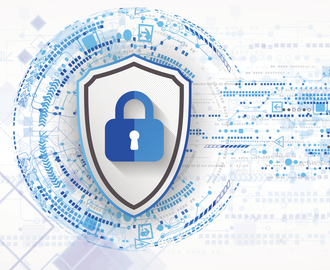Credit: Shutterstock / z_wei
Equipping a company to excel in a changing business landscape isn’t just about technology — a successful company needs a digital-savvy workforce with the mindset to take on new challenges and embrace new ways of working.
To future-proof the workforce, companies are developing new performance, reward, and training strategies. Some embrace peer-led education while others make a game of digital knowledge. In other companies, preparing the workforce for the future means making sure digital natives are versed in business fundamentals.
Cookie-cutter approaches aren’t enough to transform companies, according to a research scientist with the MIT Sloan Center for Information Systems Research who moderated a panel discussion about future-proofing the workplace at the recent MIT Sloan CIO Symposium.
“Now we're starting to understand a little more the nuances of what that looks like, and what we need to provision for people, and the support we need to give them to make that work more effectively,” she said.
Here’s how four companies are preparing their employees for the future.
Back to school at DBS Bank
At DBS Bank, a multinational company headquartered in Singapore, digital readiness and future-proofing the workforce are part of everyone’s agenda.
All 26,000 employees are encouraged to keep learning despite age or seniority, said Shefali Gupta, the bank’s executive director who manages strategy and planning for the technology and operations team. The company focuses on motivating employees to learn new skills.
A series of experiments revealed that people want to learn from their colleagues and bosses, Gupta said. So DBS started a teaching program called Back to School, a week-long event with classes held every hour, all taught by employees.
Employees can attend any classes, and sessions are recorded and made into a video series. The program was a success, Gupta said, with 1,500 class sign-ups in the first three hours of class. Sessions were full from the second day on, and there was a waitlist for people eager to teach courses.
“It makes the whole learning thing really fun,” Gupta said. “It also engages the teachers … we were taken by surprise. People who’ve never taught in their life stood in the class and they delivered such amazing sessions.”
DBS has invested in other initiatives to help employees navigate changing workplace needs:
- The company’s “people transformation index” gave 50 employees the chance to try a different job. For example, project managers worked in sales and operation managers took on technology projects. The initiative invests in employees, offering them growth paths and a door to new areas.
- Employees have the opportunity to transfer skills. Live bank tellers are increasingly replaced by automated tellers, Gupta said. Their skills, like chatting with customers and solving problems, can transfer to automated telling and talking with customers on social media.
Digital citizenship at Schneider Electric
At Schneider Electric, having a digital mindset means having passion for technology and innovation and the mindset to bring the organization along with you in embracing those ideas, according to Amy deCastro, vice president of human resources for Schneider’s secure power business.
Schneider created a “digital citizenship” initiative for the company’s 140,000 employees in which people can achieve four different levels as digital citizens: basic, intermediate, advanced, and expert. Another group of people are considered disruptors, technical experts that disrupt the company. These categories are embedded in talent reviews, deCastro said.
Embracing a digital mindset is a big shift for a company that started in the mid-1800s, and can challenge longtime employees who suddenly find their skills obsolete. Some embrace the new way of thinking and become digital trailblazers, deCastro said, while others have trouble coming on board. deCastro said the company has created an environment where employees feel safe trying something new, and even failing at that attempt.
“If they don't grasp it, if they don't love it, it's okay. That's fine,” she said. “We'll reposition you into something that you might have a little bit more passion for.”
Agility Olympics at State Street
State Street in Boston is taking a gamified approach to future-proofing employees, according to Natalie Vinitsky, chief agilest, strategist, scrum trainer, and managing director at the financial services company with 40,000 employees.
State Street focuses on agile transformation, Vinitsky said, introducing a game to achieve bronze, silver, and platinum levels of “agile maturity” and certification. The competition improves performance as teams strive to reach the top levels, she said, and employees also gain satisfaction from achievement and recognition.
“Every single year we tweak and we make it a little bit harder, so they’re not feeling like they’ve settled in their platinum achievement,” she said. “Think about the Olympic Games that happen every year. ... it definitely shows managers and even team members where they are and how to progress and how to continuously improve.”
Directing growth at Liferay
Preparing employees for the future looks different at Liferay Inc., a commercial open source software company based in California that is barely 15 years old.
The company’s 1,000 employees are in their late 30s, on average, and already well-versed in technology, said Michael Han, chief technical officer and vice president of services.
Instead of arming the staff for digital, Liferay is working on traditional business concepts. “The challenge for us right now is actually having these folks realize that agile is not ‘throw all caution to the wind’, there’s no control, those types of things,” he said.
The company grew so quickly that the right training infrastructure hadn’t been put in place. So Liferay hired a new vice president of people to work on merging “old school” controls with the company’s innovative mindset, helping employees without ample management experience learn how to measure success.
The key is focusing on the company’s core mission and vision statement. “We’re not necessarily changing our mission,” Han said. “We're just simply adjusting how we need to get there. And I think that message for our employees [is] that at the end of day, we're still trying to hit the same goal. All we’re doing is giving them more tools and more coaching and training to get there.”



